Apollo and Daphne in 5 Artworks
From Ancient Rome to the Renaissance and Rococo, the timeless appeal of the Apollo and Daphne myth spans centuries of artistic expression. The myth...
Anna Ingram 30 January 2025
Nestled in the heart of Paris on the right bank of the Seine, Musée du Louvre stands as a testament to human creativity and a shared cultural heritage spanning across the ages. Renowned as the world’s most famous art museum, it houses a vast collection of masterpieces by a diverse array of artists. However, the historical significance of the Louvre extends beyond its precious contents. From its origins as a royal residence during the Renaissance to its transformation into a public museum in the 18th century, the Louvre’s buildings have borne witness to the rise and fall of empires as well as the unfolding of cultural movements.
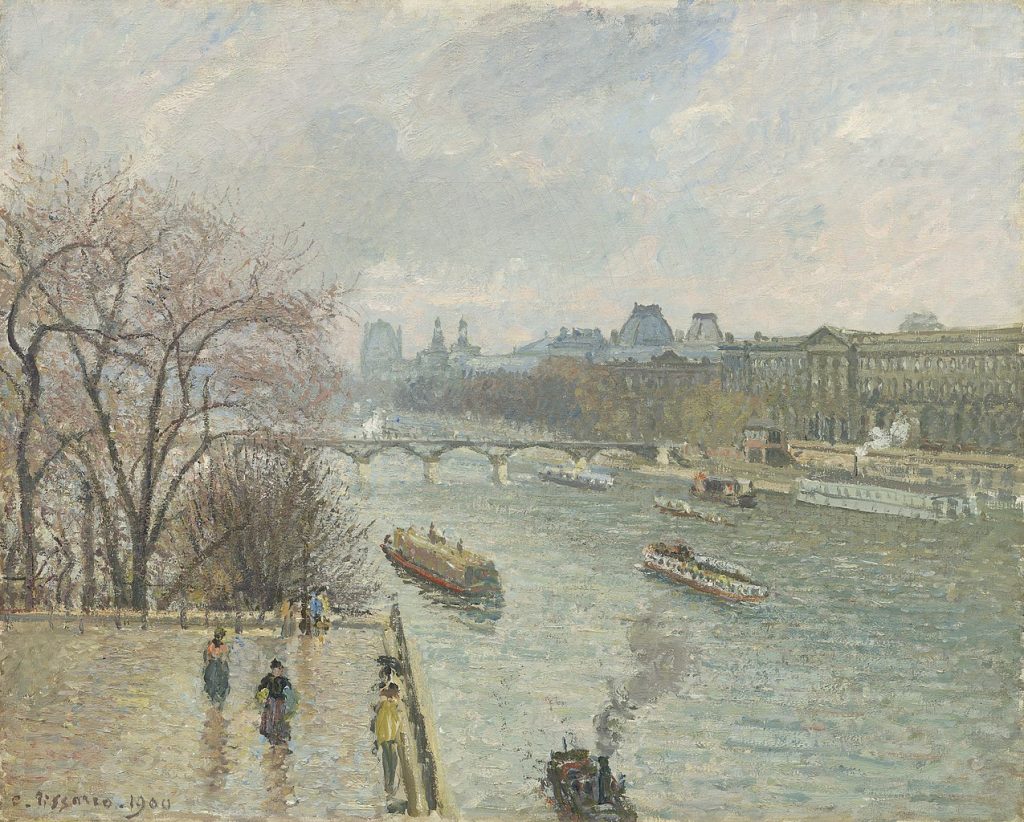
Camille Pissarro, The Louvre, Afternoon, Rainy Weather, ca. 1900, National Gallery of Art, Washington, DC, USA. Wikimedia Commons (public domain).
The museum was originally designed as a fortress in 1190 and the remnants of its original structure remain visible in its basement today. In the 16th century, the Louvre underwent extensive renovations and expansion to serve as a royal palace. It remained the primary residence for the French monarchy until the 17th century when Louis XIV relocated the royal residence to Versailles, transforming the Louvre into a gallery for the vast Greek and Roman collection of French royalty.
After the royal departure, the building became a residence for artists who received royal patronage, gradually evolving into a cultural hub and host to the famous Paris Salon.
Following Louis XVI’s imprisonment on August 10, 1792, the Louvre’s royal collection became national property. A year later, the revolutionary government opened the Musée Central des Arts in the Grand Galerie of the Louvre, commemorating the end of the monarchy.
During the initial phase, the public was granted access to the modest original collection consisting of 537 paintings and 184 artifacts. Artists with royal patronage still resided within the Louvre at the time. There were some challenges and structural deficiencies during these early years that lead to a temporary closure in May 1796.
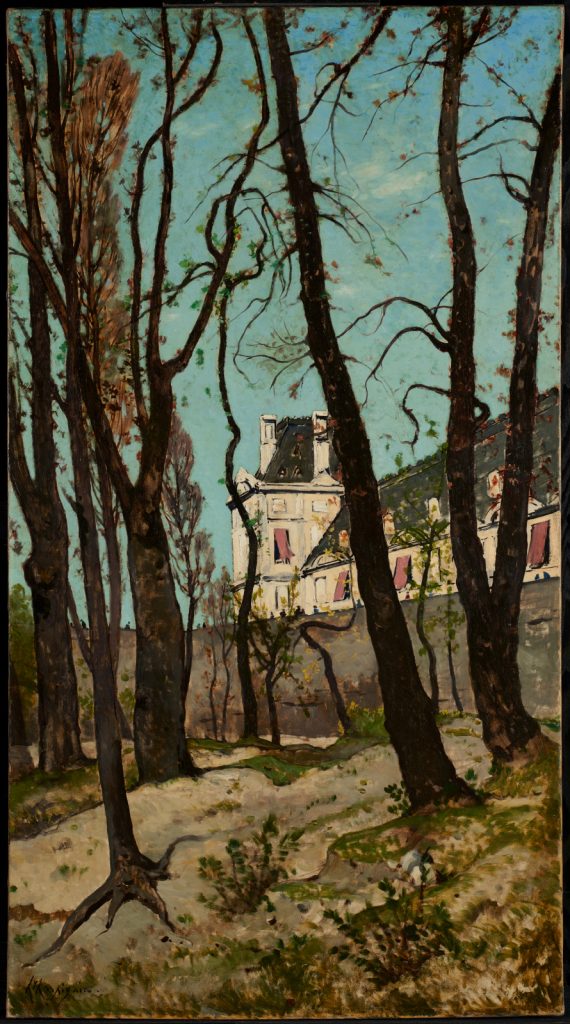
Alexandre Brun, View of the Salon Carré at the Louvre, ca. 1880, Louvre, Paris, France. Wikimedia Commons (public domain).
In July 1801, Napoleon reopened the museum, laying the foundation for the Louvre as it exists today. Through military campaigns, commissions, and donations, he significantly expanded the museum’s collection, incorporating artworks from Europe and the Near East. The museum was even temporarily renamed Musée Napoléon.
After the Treaty of Fontainebleau, nearly 5,000 artworks were returned to their countries of origin and the Louvre reclaimed its original name while continuing its expansion. While much of the plundered art was returned after Napoleon’s defeat in 1815, the current Egyptian antiquities collections and other departments owe their existence to Napoleon’s conquests.
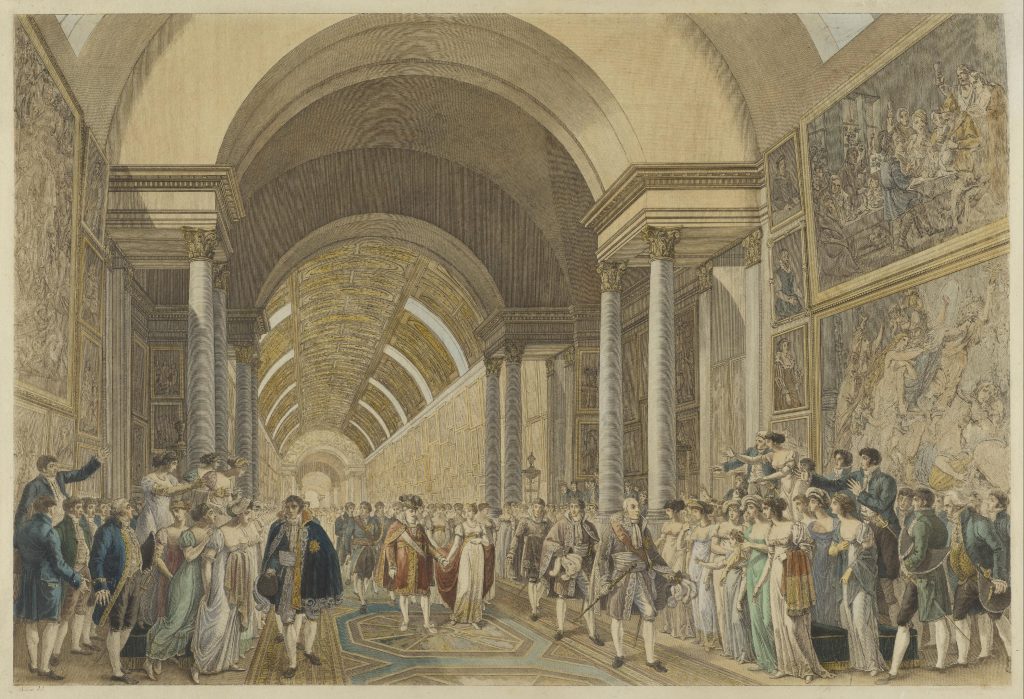
Heinrich Reinhold, The Marriage of the Emperor Napoleon I to the Archduchess Marie-Louise of Austria in the Grand Gallery of the Louvre on April 1, 1810, ca. 1810-1811, Philadelphia Museum of Art, Philadelphia, PN, USA.
Beyond the priceless artworks that adorn its halls, the Louvre itself stands as a remarkable architectural exhibit. Over its long history since the 12th century it has undergone significant expansions and renovations, culminating in its present form. Notable features include the 17th-century “Colonnade” designed by Claude Perrault, which is an exemplary representation of French Classicism, replete with Corinthian columns and pavilions adorning the eastern façade.
In the 1980s and 1990s, the Grand Louvre underwent extensive renovations, incorporating modern amenities and considerably expanding the exhibition space. The iconic steel and glass pyramid, designed by Chinese-American architect I.M. Pei, was inaugurated in 1988 at the center of the Napoleon courtyard, serving as the lobby entrance. While initially criticized by traditionalists, the pyramid has become an integral element of the museum’s design, seamlessly blending with the classical backdrop.
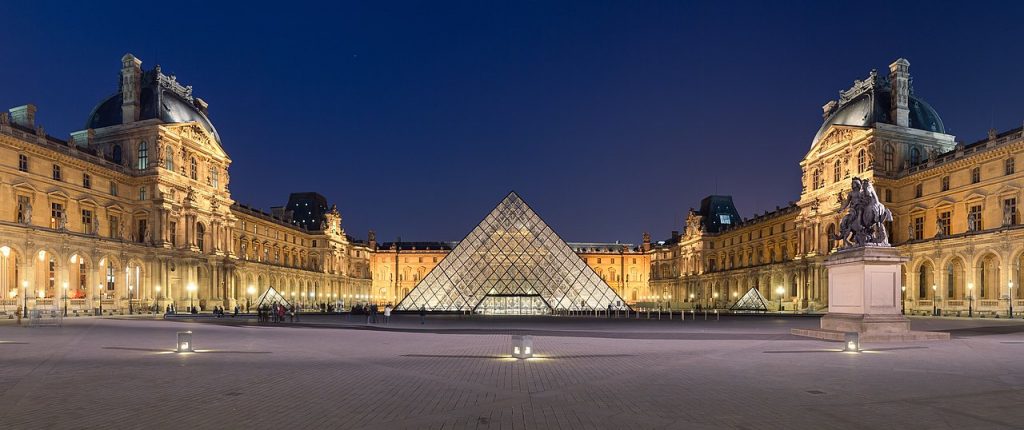
Exterior View of the Louvre Museum, ca. March 2020. Photograph by Benh Lieu Song via Wikimedia Commons (CC-BY-SA-4.0).
The Louvre showcases a diverse array of sculptures, objects d’art, paintings, drawings, and archaeological finds. Its collection is divided into seven curatorial departments: Egyptian Antiquities; Near Eastern Antiquities; Greek, Etruscan, and Roman Antiquities; Sculpture; Decorative Arts; Paintings; Prints and Drawings. In recent years, the Louvre has also acquired a diverse range of Eastern treasures from China, Japan, India, and the Islamic world, enriching their understanding of global artistic heritage.
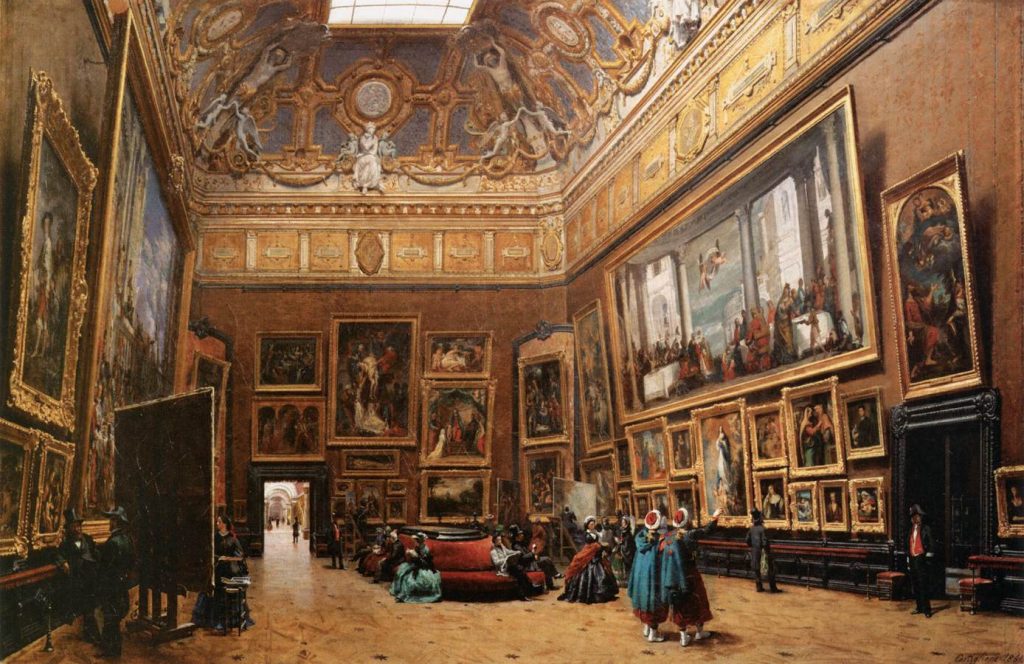
Giuseppe Castiglione, View of the Salon Carré in the Louvre. ca. 1861, Louvre, Paris, France.
A captivating tradition that has endured throughout the museum’s long history is the practice of artists copying works of art. The Louvre has long attracted artists engaged in this practice as a means to pay homage to the masters, sharpen their technical skills, and immerse themselves in the richness of art history. This practice continues today and also adds a dynamic and interactive element to the visitor experience.
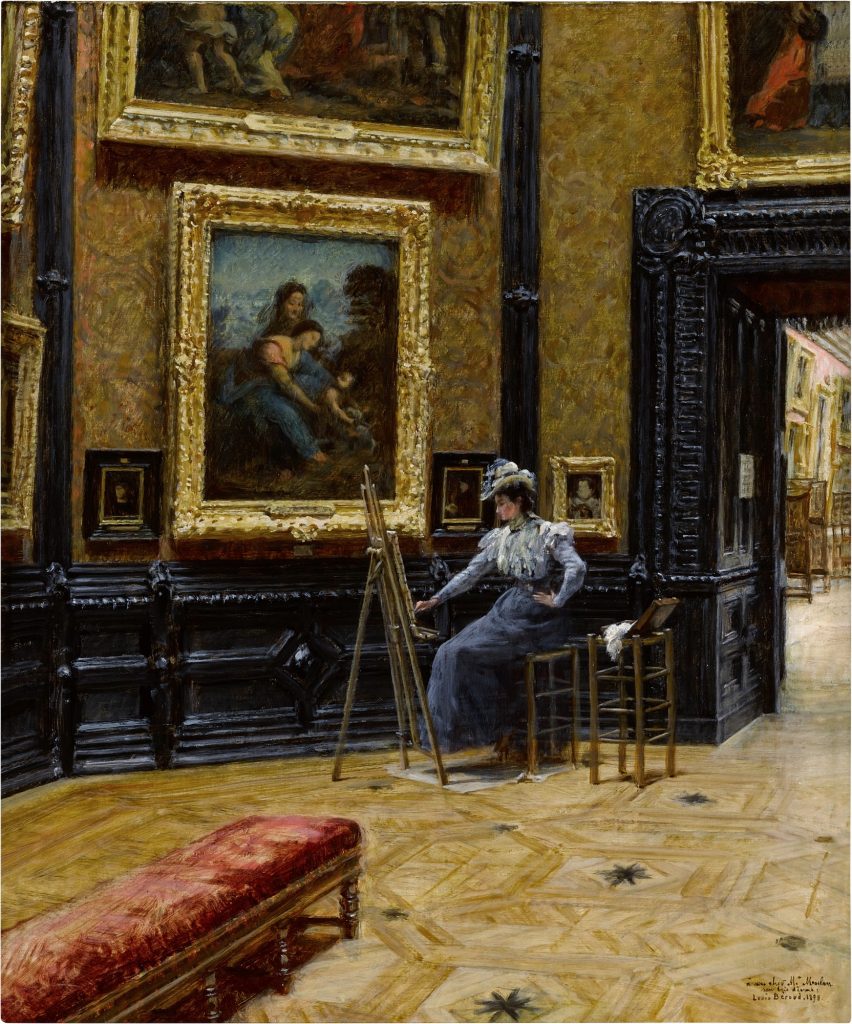
Louis Béroud, An Elegantly Dressed Copyist at the Louvre, ca. 1898, private collection. MutualArt.
With its vast collection including classical sculptures, iconic paintings, and cultural artifacts from around the world, the Louvre inspires a deep appreciation for the beauty and diversity of human achievement. It stands as a testament to the enduring power of art and history and offers an exceptional glimpse into human creativity throughout the ages.
DailyArt Magazine needs your support. Every contribution, however big or small, is very valuable for our future. Thanks to it, we will be able to sustain and grow the Magazine. Thank you for your help!